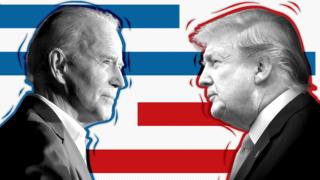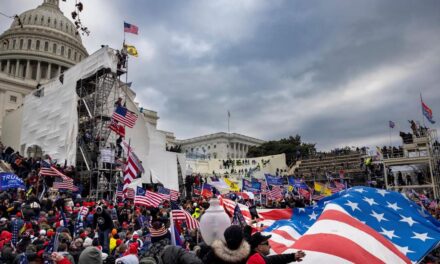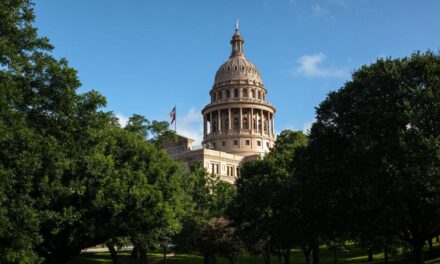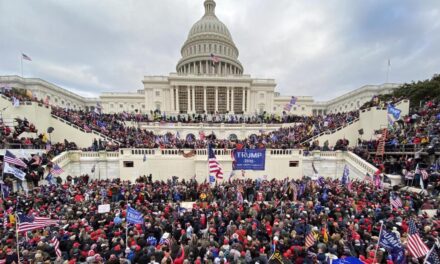
US election 2020 polls: Who is ahead – Trump or Biden?

Voters in America will decide on 3 November whether Donald Trump remains in the White House for another four years.
The Republican president is being challenged by Democratic Party nominee Joe Biden, who is best known as Barack Obama’s vice-president but has been in US politics since the 1970s.
As election day approaches, polling companies will be trying to gauge the mood of the nation by asking voters which candidate they prefer.
We’ll be keeping track of those polls here and trying to work out what they can and can’t tell us about who will win the election.
How are the presidential candidates doing nationally?
National polls are a good guide as to how popular a candidate is across the country as a whole, but they’re not necessarily a good way to predict the result of the election.
In 2016, for example, Hillary Clinton led in the polls and won nearly three million more votes than Donald Trump, but she still lost – that’s because the US uses an electoral college system, so winning the most votes doesn’t always win you the election.
With that caveat aside, Joe Biden has been ahead of Donald Trump in national polls for most of the year. He has hovered around 50% in recent weeks and has had a 10-point lead on occasions.
By contrast, in 2016 the polls were far less clear and just a couple of percentage points separated Mr Trump and his then-rival Hillary Clinton at several points as election day neared.
- A really simple guide to the US election
Which states will decide this election?
As Mrs Clinton discovered in 2016, the number of votes you win is less important than where you win them.
Most states nearly always vote the same way, meaning that in reality there are just a handful of states where both candidates stand a chance of winning. These are the places where the election will be won and lost and are known as battleground states.
In the electoral college system the US uses to elect its president, each state is given a number of votes based on its population. A total of 538 electoral college votes are up for grabs, so a candidate needs to hit 270 to win.
As the map above shows, some battleground states have a lot more electoral college votes on offer than others so candidates often spend a lot more time campaigning in them.
- What is the electoral college?
Who’s leading in the battleground states?
At the moment, polls in the battleground states look good for Joe Biden, but there’s a long way to go and things can change very quickly, especially when Donald Trump’s involved.
The polls suggest Mr Biden has leads in Michigan, Pennsylvania and Wisconsin – three industrial states his Republican rival won by margins of less than 1% to clinch victory in 2016.
But it’s the battleground states where Mr Trump won big in 2016 that his campaign team will be most worried about. His winning margin in Iowa, Ohio and Texas was between 8-10% back then but it’s looking much closer in all three at the moment.
Those poll numbers may help explain his decision to replace his re-election campaign manager in July and his regular references to “fake polls”.
Betting markets, however, are certainly not writing Mr Trump off just yet. The latest odds still give him about a one in three chance of winning on 3 November.
- Does Trump have the power to delay the election?
Has coronavirus affected Trump’s numbers?
The coronavirus pandemic has dominated headlines in the US since the start of the year and the response to President Trump’s actions has been split predictably along party lines.
Support for his approach peaked in mid-March after he declared a national emergency and made $50 billion available to states to stop the spread of the virus. At this point, 55% of Americans approved of his actions, according to data from Ipsos, a leading polling company.
But any support he had from Democrats disappeared after that, while Republicans continued to back their president.
By last month, however, data suggested even his own supporters had begun to question his response as states in the south and the west of the country dealt with renewed outbreaks of the virus.
That may explain why he has been less optimistic about coronavirus in recent weeks, warning that the situation will “get worse before it gets better”
He also donned a face mask for the first time and called on Americans to wear them, saying “they’ll have an effect” and show “patriotism”.
One leading model produced by experts at the University of Washington predicts the death toll will have passed 250,000 by election day.
- Why are Americans so angry about masks?
Can we trust the polls?
It’s easy to dismiss the polls by saying they got it wrong in 2016 and President Trump frequently does exactly that. But it’s not entirely true.
Most national polls did have Hillary Clinton ahead by a few percentage points, but that doesn’t mean they were wrong, since she won three million more votes than her rival.
Pollsters did have some problems in 2016 – notably a failure to properly represent voters without a college degree – meaning Mr Trump’s advantage in some key battleground states wasn’t spotted until late in the race, if at all. Most polling companies have corrected this now.
But this year there’s even more uncertainty than normal due to the coronavirus pandemic and the effect it’s having on both the economy and how people will vote in November, so all polls should be read with some scepticism, especially this far out from election day.
- Americast: The latest news and gossip from the campaign trail


















